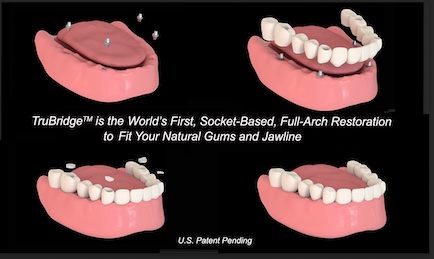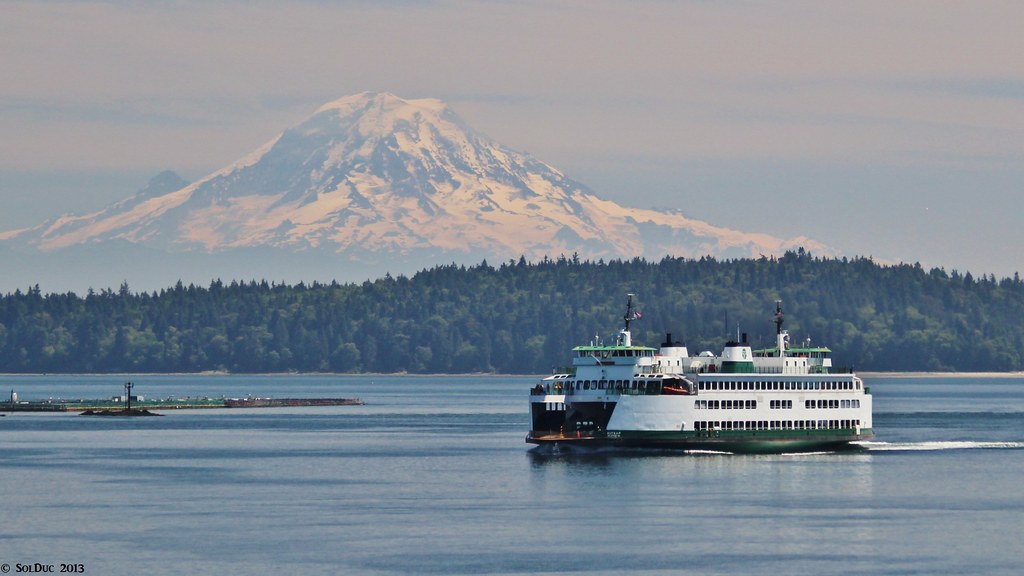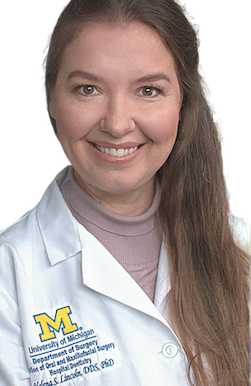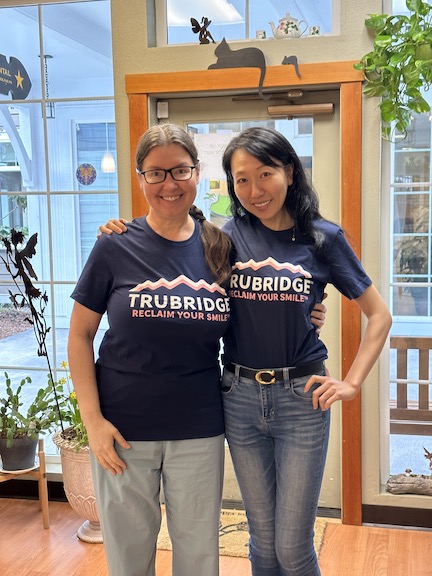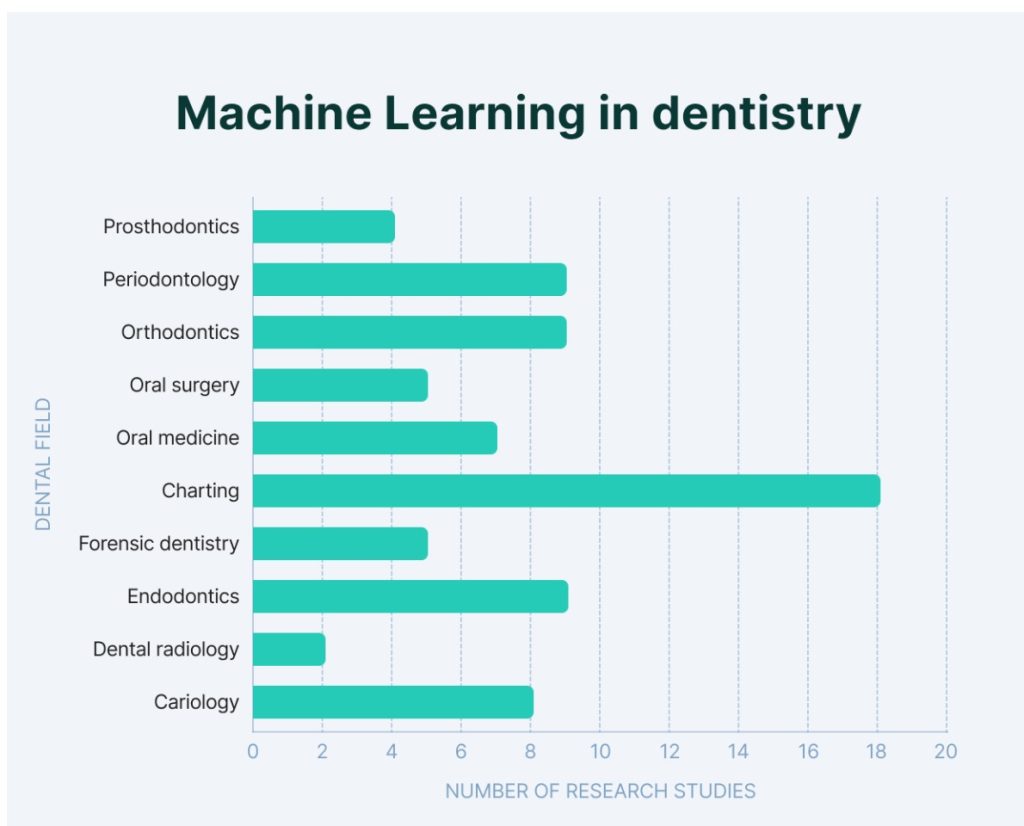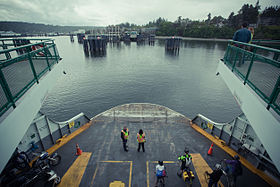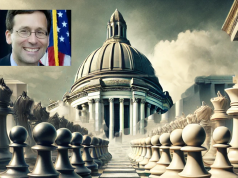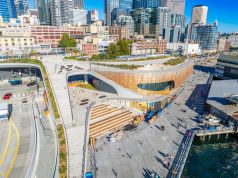When the Sonicare toothbrush was in canine trials at the University of Washington School of Dentistry, even the most diligent of chewers could have imagined the device would become the fastest growing dental hygiene product in history.
The Optiva Corporation and founder David Giuliani had created the better “mouth trap.” All that industry rival, Braun Oral-B, could do was bristle at the clinical research that showed the Seattle-born technology was more effective in reduction of gingival inflammation. plaque removal and periodontal health.
The world’s first portable, induction-powered. sonically oscillating dental device for personal use, Sonicare turned the world’s health-conscious focus on the Pacific Northwest, including Philips, the Dutch electronics giant, which acquired the product in 2000. Fun fact: In 1998, the Woodland Park Zoo used a Sonicare to clean the teeth of a seal.
Washington State: A Mecca for Dental Care
With its proud history of innovation, pioneering spirit, and entrepreneurial culture, Washington state is becoming a veritable mecca for dental care, ranking seventh in the United States for the number of dentists per capita, and first for innovation.
Over a ten-year period, the total amount of dentists grew a record-breaking 56 percent, nearly three times the state’s population growth in the same timeframe. The result was a 32 percent increase in dentists per capita or double the increase nationwide. While it can sometimes seem hard to get a cleaning appointment, the rate for our dental hygienists and dental assistants also exceeds the national average. There is currently a fierce demand for dental hygienists.
Already a life sciences leader in genomics, immunotherapy, AI and cloud computing, the market for dental therapies is about to break wide open.
TruBridge™: A Dental Bridge to the Future
Now, thirty years after the Sonicare prototype was introduced, a revolutionary dental prosthetic known as TruBridge could soon make Washington state a global destination for Dental Tourism.
Invented not by the Tooth Fairy but by Dr. Helena Soomer Lincoln, a renowned dentist and implantologist who has done thousands of restorations around the world, from her native Estonia to France, Norway, and Sweden, the TruBridge Dental Restoration System began inside Fairy Tale Dental, her local dental practice voted “Best on Bainbridge Island.”
Dr. Lincoln’s U.S. patent-pending, “teeth only” dental bridge is installed gently into the natural gums, placing the teeth inside their original sockets. There are no heavy, artificial gums, no bone reduction, nothing covering the roof of the mouth, and no smothering of taste-buds. The ultra-light, Zirconia-strong makeup of the new smile is proving the maxim: “Build a better mouthtrap and the world will beat a path to your door.”
The Economies of Dental Tourism
While it takes a ferry ride to reach TruBridge Dental on Bainbridge Island, the cost of riding this new wave in dental science pales in comparison to the trend that has seen an exodus of tens of thousands of Americans to Mexico, Costa Rica, the Philippines, or even Dubai, for affordable dental restorations.
The Website DentalDepartures.com lists 2,194 dental clinics in 41 countries, none of which offer the nascent TruBridge breakthrough. The clinics abroad promote a conventional All-on-4™ implant which drills four rods and a platform of artificial gums and teeth into the alveolar jawbone.
The global dental migration for such a product has come as the only answer for those who simply want to reclaim their original smiles, including people who have dental insurance.
The cost for the All-on-4™ treatment in the U.S. is a whopping $50k-60k per arch (upper or lower), a price comparable to coronary bypass surgery. In this case, none of it is covered by insurance. The Clear Choice™ dental implant runs $40,000 per arch. In Mexican towns like Los Algodones, which hosts 350 dentists in its small downtown area, the cost can drop precipitously to $14,000 per arch, not including airfare or hotel, or the fact that it takes two appointments and two trips across the border to complete the treatment.
TruBridge costs out at $7k per arch, the cost of installing a home spa, furnace or other home improvement. For those who qualify, Washington state insurance will cover the cost of the extractions but stops there (TruBridge does extractions “atraumatically” to preserve the integrity of the sockets and ridgeline.)
So why on earth — anywhere on earth — should the price of a dental restoration require a second home mortgage, a U.S. passport and an expedition to destinations unknown? That question struck a tragic chord recently when a Northwest woman traveled to San Jose, Costa Rica, to undergo dental surgery for implants and veneers at a dental clinic there. The tourist from Chehalis fell into a coma when she suffered cardiac arrest after a reaction to anesthesia during the procedure. She is finally at home after a harrowing period in a private Costa Rican hospital at $15,000 a day. Conventional dental implant surgery requires general anesthesia whereas the TruBridge implant does not, using a local anesthetic instead.
The pricing paradox is the product of a broken U.S. health care system that considers the restoration of missing teeth lost to injury, disease, or decay a non-essential procedure, even while unobstructed chewing, speaking and breathing are vital for survival. Another cost factor is that the dental procedure typically involves as many as four different dental professionals: a periodontist, a prosthodontist and the primary dentist, plus the dental lab technician. The pendulum is starting to swing as more dentists bring 3D maker technology into their practices, but not very far, not yet.
“TRUBRIDGE restoration just makes total sense!”
— Dr. Helena Soomer Lincoln
Changing the Face of Tech-Knowledgy
The handheld wands that a tooth fairy or Hogwart’s Academy wizard might use for casting powerful spells have ushered in a new era of digital dexterity in dentistry. Handheld, scanning wands, better known as intra-oral scanners, can capture and analyze imagery of one or more teeth inside the mouth — a major stride from tray impressions, providing a more comfortable experience for the patient and more accurate results for the dentist. The imagery from the intra-oral scanner combined with the 3D x-ray from a Cone Beam Computed Tomography (CBCT) ensures the dentist has everything she needs to deliver a beautiful restoration.
The online interface Seattlites know so well has allowed patients to upload initial photos of their teeth and gums (the “dental selfie”) and then video conference with the dentist to discuss their condition before an appointment. Tele-dentistry has joined the ranks of tele-medicine in fostering doctor-patient consultation from the comfort of home.
After an in-person examination, the dental office can transmit the patient’s profile data via online transfer instead of case boxes containing plaster casts made from goopy impression trays. Labs like KDL on the Olympic Peninsula have “cut the traditional timeframe of creating crowns and bridges to 48 hours or less, a time-savings of 50%,” according to KDL owner Ron Walsh.
The automated design and milling phases that come next have transformed the traditional role of the dental lab technician from artisanal handcrafting to machine learning programmer. In fact, the AI in machine learning of the 3-D printing process for dental modeling is becoming a most trusted source for image detection and case acceptance.
“With the integration of AI and Machine Learning, we can look forward to another revolution in treatment and restoration options that are delivered quickly and accurately,” explained Stuart Moulder, TruBridge CTO.
Yet another version of wand technology, the Milestone STA™ System can detect the precise location for delivering a local anesthetic and inject the medicine at a consistent flow and rate below the patient’s pain threshold, and without collateral numbness to the lips or face.
A Game-Changer As Big as Pickleball
Should TruBridge succeed in breaking the price and production barriers, and before the licensing of the product becomes a full-blown reality for training dentists worldwide, the PNW dental community could find itself welcoming visitors from near and far as a new home for Dental Tourism.
“The most gratifying feedback from patients is that they forget that it is a bridge and feel as if they never lost their teeth in the first place. I am so moved by the positive feedback that it brings tears of joy to my eyes,” said Lincoln, a mother of five. “My patients are super happy. It’s like a fairy tale come true.”
Turns out the biggest game-changer on Bainbridge Island could be more than Pickleball. And that is certainly something to smile about! [24×7]










